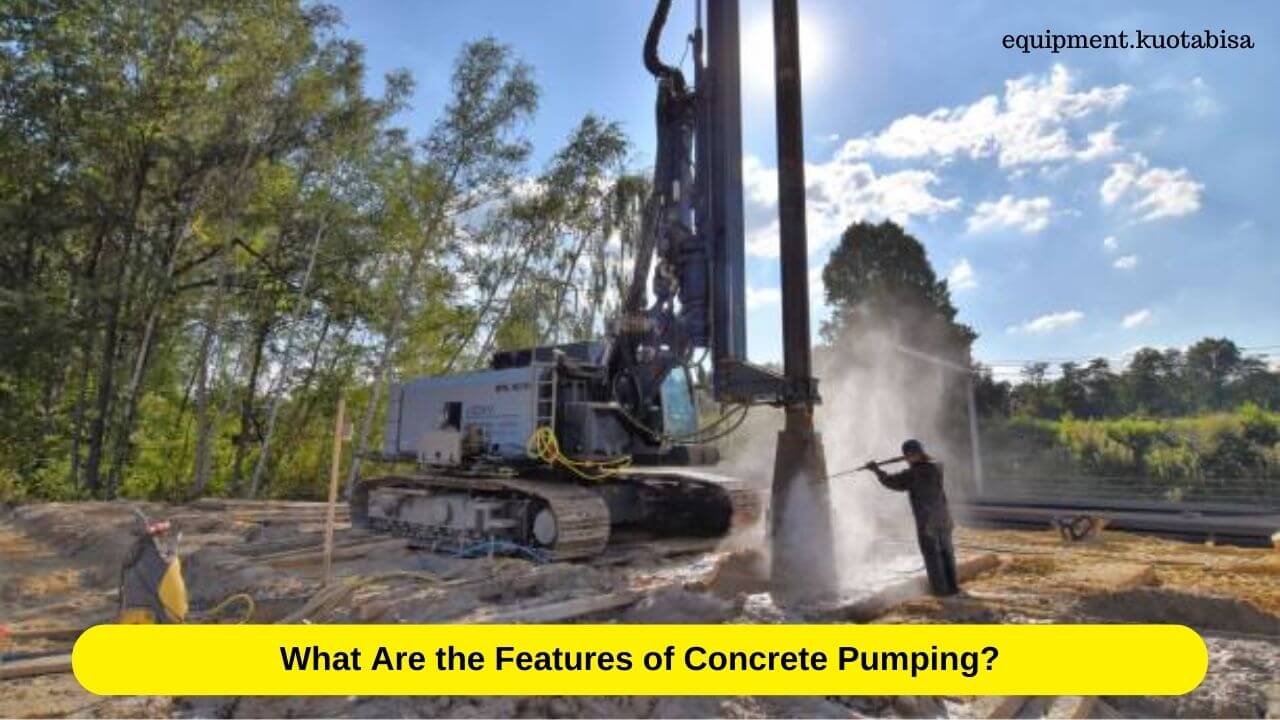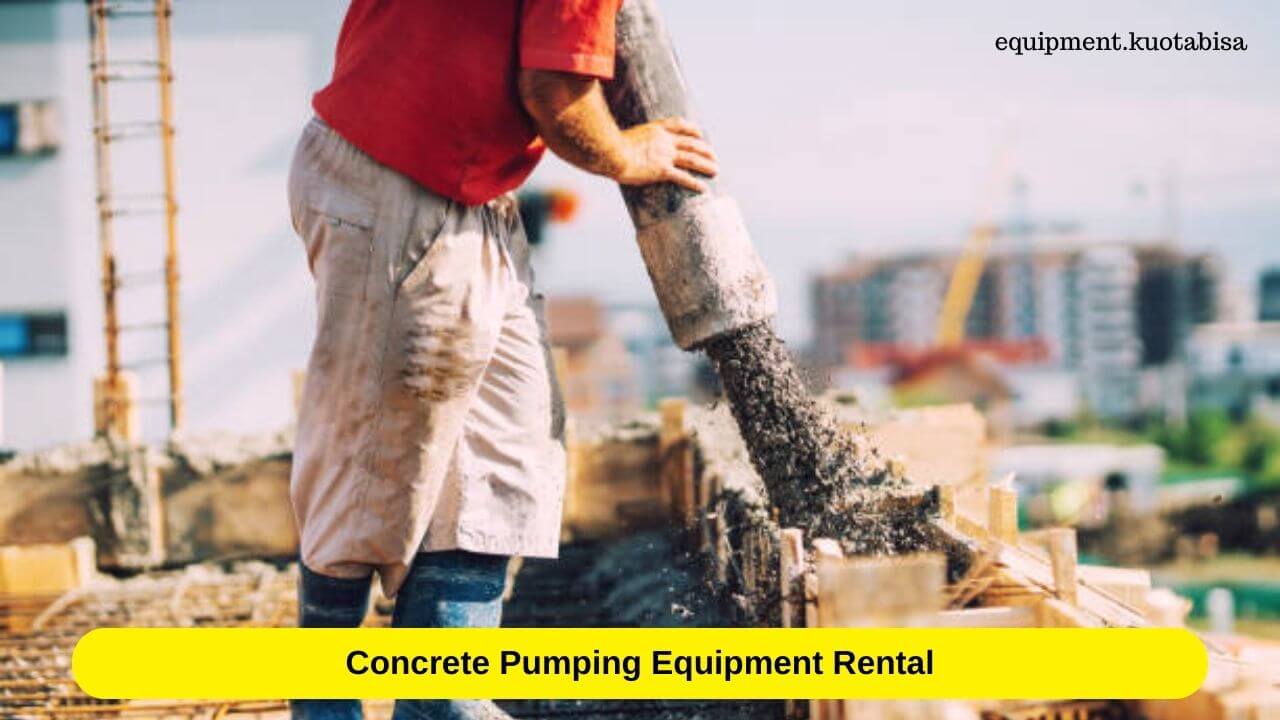Concrete Pumping Equipment Rental – Concrete pumping revolutionizes construction by efficiently transporting and placing concrete in challenging locations, boosting project speed and accuracy.
Concrete pumping utilizes specialized equipment, such as truck-mounted or trailer-mounted pumps, to transfer liquid concrete with precision over varying distances and heights.
This method minimizes labor-intensive processes like manual pouring, reducing the risk of errors and increasing overall project productivity.
Concrete pumping finds its application in diverse projects, from residential foundations to massive commercial structures, offering a versatile solution for concrete placement.
Safety protocols and skilled operators play a crucial role in ensuring the seamless operation of concrete pumping, allowing for the successful execution of construction endeavors.
What Are the Features of Concrete Pumping?

Concrete pumping offers several distinctive features that make it a preferred method for concrete placement in various construction projects:
Precision Placement
Concrete pumping allows for precise placement of concrete, enabling accurate pouring even in challenging locations like high-rise buildings or tight spaces.
Enhanced Efficiency
This method significantly reduces the labor required for concrete placement, increasing overall project efficiency and speeding up construction timelines.
Reduced Labor and Costs
By minimizing the need for manual labor, concrete pumping helps cut down on labor costs while ensuring consistent and efficient concrete distribution.
Increased Speed
Concrete pumps can deliver a large volume of concrete in a relatively short time, leading to faster project completion compared to traditional pouring methods.
Versatility
Concrete pumping is adaptable to various project types, sizes, and requirements, making it suitable for both small residential tasks and large-scale commercial ventures.
Improved Safety
With reduced manual handling, the risk of accidents and injuries associated with concrete pouring is diminished, contributing to a safer work environment.
Access to Hard-to-Reach Areas
Concrete pumps can transport concrete across obstacles, around corners, and to elevated locations that would be challenging or impossible to access using other methods.
Minimized Concrete Segregation
The pumping process helps prevent the separation of aggregates and cement in the concrete mix, ensuring a more consistent and homogenous end product.
Less Environmental Impact
Concrete pumping can lead to less concrete wastage, as spillage and over-pouring are minimized, promoting more sustainable construction practices.
Remote Operation
Many modern concrete pumps can be operated remotely, allowing the operator to have a better view of the placement area and make real-time adjustments as needed.
Economical Use of Materials
Concrete pumping enables better control over the concrete mix and placement, resulting in efficient use of materials and reduced waste.
Enhanced Aesthetics
The controlled and accurate placement offered by concrete pumping contributes to better finishing and aesthetic outcomes, crucial in architectural and decorative concrete projects.
Read More: 10+ Motor Grader Applications Across Construction
Concrete Pumping Equipment Rental

Concrete pumping equipment rental involves the process of renting specialized machinery used for transporting and placing concrete in construction projects.
This equipment is particularly useful when traditional methods of pouring concrete, such as wheelbarrows or cranes, are not feasible or efficient due to the distance or height that the concrete needs to be placed.
Concrete pumps are used to transfer liquid concrete from a mixer to the desired location on a construction site, whether it’s a building foundation, a high-rise structure, or any other concrete-requiring project.
Here’s how the process of concrete pumping equipment rental generally works:
Contact a Rental Company
Reach out to a construction equipment rental company that offers concrete pumping equipment.
You can find these companies online, in directories, or through recommendations from colleagues in the construction industry.
Provide Project Details
Inform the rental company about your project’s specifics, such as the type of project, the amount of concrete required, the distance the concrete needs to be pumped, and any height considerations.
This information helps them recommend the appropriate type and size of concrete pump for your needs.
Equipment Selection
Based on your project details, the rental company will suggest the suitable concrete pumping equipment. There are two main types of concrete pumps:
- Truck-Mounted Concrete Pumps: These pumps are mounted on trucks and are highly mobile. They are ideal for larger projects and can reach great heights.
- Trailer-Mounted Concrete Pumps: These pumps are mounted on trailers and are also mobile but are more compact. They are suitable for smaller projects and locations where space is limited.
Rental Agreement
Once you’ve selected the appropriate equipment, you’ll enter into a rental agreement with the company.
This agreement will outline the rental duration, costs, terms and conditions, insurance requirements, and any other relevant details.
Delivery and Setup
The rental company will deliver the concrete pump to your construction site and set it up.
They will also provide any necessary training on operating the equipment safely and efficiently.
Concrete Placement
With the equipment in place, you can start pumping concrete.
A trained operator will control the pump to transfer concrete from the mixer to the desired location.
Concrete pumps can deliver concrete at a high rate and with precision, making the placement process faster and more accurate than manual methods.
Maintenance and Support
Throughout the rental period, the rental company should provide maintenance support to ensure the equipment operates smoothly.
In case of any issues, they should be reachable for troubleshooting and repairs.
Return of Equipment
Once the project is complete or the rental duration ends, the rental company will retrieve the equipment from your site.
Make sure the equipment is cleaned and in good condition as per the rental agreement.
It’s essential to choose a reputable rental company that offers well-maintained equipment and good customer support.
Always adhere to safety guidelines and follow the instructions provided by the rental company to ensure a successful and safe concrete pumping process.
Read More: Paver Machine Price Comparison and Best Brand in 2023
Conclusion
In conclusion, concrete pumping stands as a testament to the innovation within the construction industry.
By streamlining the process of concrete placement, it addresses the challenges posed by distance, height, and efficiency, while enhancing project timelines and precision.
As technology and techniques continue to evolve, concrete pumping remains a vital tool that not only simplifies construction but also contributes to safer, more efficient, and environmentally conscious building practices.